Self-laying the floorboard: technology from A to Z
At the disposal of owners who want to lay down a new or change the old flooring, dozens of methods and types of materials. Each of them has priority qualities and disadvantages. Despite the tangible technological and technical advantages of progressive flooring schemes, many owners are attracted by the laying of the floorboard, as a practical, environmentally friendly, durable material.
The wood created by nature is a rather “capricious” material, but it is it that helps optimize the microclimate in housing. A number of difficulties are caused by its laying, however, subject to technological rules, equipped with solid wood boards the floors serve faithfully and are not satisfactory.
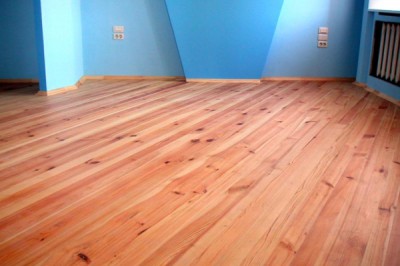
Content
Types of substrates suitable for laying floorboards
The plank floor can be arranged over any type of ceilings and over supporting pillars with lags. As the basis for the installation of the floorboard can be used:
- concrete floors with leveling polymer or concrete screed;
- logs installed on top of any floor with a screed or without leveling layer or laid on brick supports;
- moisture resistant plywood;
- an old wooden floor or draft of lumber of 2-3 grades.
Installation of a wooden floor most often completes the entire range of arrangement works; it is carried out only in a room equipped with windows and door structures. The floorboard reacts sharply to excess moisture - laying it is not permissible if the humidity level of the finished walls and leveling screed is more than 12%. The wood will also deform if the humidity of the air mass in the finished room is more than 60%, the boards will dry out and crack when humidity is less than 40%.

Tip. Lumber for the floor must be removed from the packaging three days before fixing the boards. Boards can be laid without nailing them to the rough surface, or simply left in the room for "getting used" to the surrounding atmosphere.
The device of a wooden floor on logs
The most common scheme of flooring with a coating of boards. Logs (wooden blocks with a rectangular cross-section) can be attached to the rough base using adhesive mastics or self-tapping screws. They lay them perpendicular to the direction of the floorboard.
After installation, the system constructed from the timber is leveled, trimming the excesses and placing chips under the understated areas. Logs can be laid using the innovative high-speed method using a beam equipped with height adjustment devices.
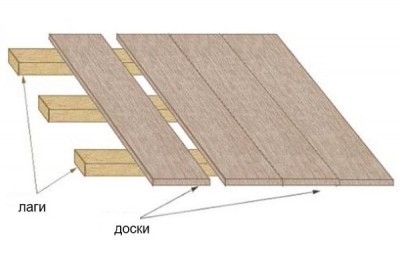
Wood has good thermal insulation properties, but in some cases, wood floors remain cold. It is very important to find the cause of the problem. Learn more about this from our article:https://floor.expertexpro.com/en/ustroistvo-rmnt/pochemu-poly-xolodnye.html.
Moisture-proof plywood base
It is possible to lay plywood with hydrophobic impregnation on any type of rough foundation, including logs, if additional strengthening of the multilayer floor structure is required. Standard installation of the floorboard on top of the plywood precedes the alignment of the rough base.
Plywood sheets cut into longitudinal segments are installed in a diagonal direction with respect to the laying of the board. Fastening is done with dowels or screws. Technological seams are left between the plywood sheets and around the perimeter of the room to be equipped.
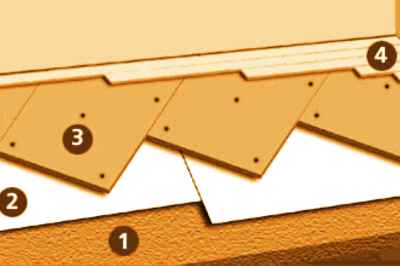
Note. Plywood can simply be glued to the screed, to the leveled cement or wooden floor prepared for installation. Those who prefer adhesive technology must definitely choose a binder composition that is compatible with the type of roughing base and with insulating materials.
After completing the laying of plywood sheets, its surface is ground, then the dust and dirt formed during grinding are completely removed. Before installing the boards, soil is applied, after which the floor board is fastened. Then again grinding, varnishing, paint or oil.
Mounting a board over an existing floor
Before laying, they check the reliability of fastening the elements of the old flooring, duplicate the untrustworthy fasteners, if necessary, dismantle worn boards, instead of which inexpensive pine lumber can be laid.
Important. When installing boards on top of an old plank floor, they must be laid perpendicular to the direction of the worn coating.
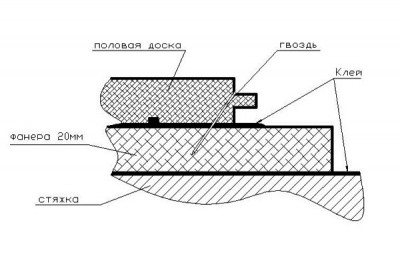
Finishers strongly recommend dismantling old boards and screeding. However, if the reliability of the base is beyond doubt, you can do without it, but with preliminary grinding. There is another way: mounting plywood sheets on old boards.
Warming and waterproofing of such a floor
The floor in the premises of the first floors should be insulated unconditionally. You can only cancel events if there is a heated basement. As a heat-insulating material, vapor-permeable heaters are preferred: fiberglass, basalt wool. Thermal insulation material is placed between the bars, lags, covered with a layer of vapor-permeable waterproofing.
Important. Between the lower plane of the plank floor with logs and the surface of the layer, designed for waterproofing and insulation, it is required to set aside a ventilation gap of 2-4 cm high.

It is desirable to protect the multilayer floor structure with the flooring from the boards from moisture coming from the basement or in the materials of the floors. To do this, use a waterproofing membrane with a high vapor permeability (not less than 800 g / m2) Free circulation of fumes will protect the wood from rot. Therefore, for the installation of floors from natural organics, a plastic film that does not allow steam to pass through is not recommended.
Sometimes you don’t need to completely redo the old wooden floor, just repair it and save money. You will learn more about how to close up cracks in the floor correctly in the material:https://floor.expertexpro.com/en/ustroistvo-rmnt/shheli-v-derevyannom-polu.html.
Which wood is better to use?
The strongest wood for flooring is considered Siberian larch and oak. They steadfastly hold the defense in front of all the adversities that have leaped to their surface. Boards made of softer aspen or alder are placed in rooms with a slight load: in nurseries, in rest rooms. Lumber from pine, fir, spruce is rarely used for flooring. Most often they are used for the construction of the run-up, the rough foundation for the finishing material.
The geometric parameters of lumber are selected taking into account the personal preferences of future owners. Focusing on strength criteria, they often prefer a board with a thickness of 40 mm. However, it should be remembered that buying thick, rather expensive boards should not be saved, reducing costs by acquiring raw material. A thick floorboard that has not passed chamber drying can lead so that self-tapping screws “fly out”.
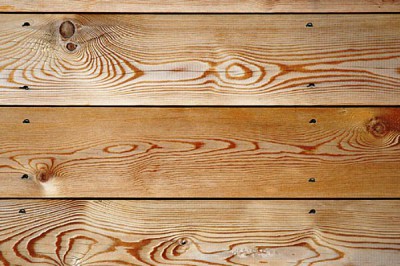
The choice of lumber of a certain grade depends on the purpose of the premises, the goals of the owners and the intended methods of subsequent finishing. Products of the highest grade differ with a smooth surface with a beautiful structural pattern, which after installation is enough to open with varnish. There are lovers of the natural beauty of wood with a knot pattern, they will like 1 or 2 grade. For painting, it makes no sense to buy material above the 3rd grade.
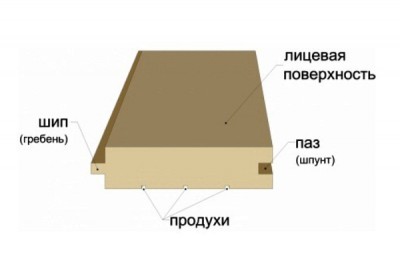
Non-grooved material is rarely used now. Boards with straight edges, connected end-to-end, after a short period of operating time, will disappoint the owners of the curvature of the surface and cracks.
Technology of installation of tongue-and-groove boards
A good direction for laying boardwalk in residential premises is the orientation parallel to the flow of light from the windows. In corridors and vestibules boards are directed along the movement vector. Boards can be stacked without displacement of elements or in a run.
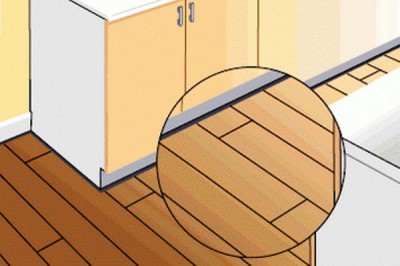
For mounting a floorboard with a run, it is necessary to perfectly trim the elements. To maintain an impeccable right angle without experience is quite difficult. It is advisable for sufferers to arrange the floor in this way, it is desirable to stock up with a template to mark the sawing line. Around the room should be maintained technological indentation. Between the floor and the walls you need to leave a distance of 1-2 cm to ensure longitudinal movements. Upon completion of the installation, expansion joints are closed with a plinth.
So the order of work:
- The first tongue-and-groove board is laid to the wall with a spike (this is a mounting ledge), so it is more convenient and reliable to unite the elements.
- The second board is connected to the first, combining the groove and the spike. It is not advisable to fasten the boards with nails. Their hats can subsequently "come out", and the nails themselves can rust. It is better to fix the boards with self-tapping screws (60 or 70 mm), the optimum diameter is 4-4.5 mm.
- Fastening boards can be done in two ways. The first method with a tilt of the screws at 45º, the second without a slope from the top, followed by sealing the hats with sealant. The second option is more reliable, but the first is more aesthetic.
- Along the perimeter, all floor elements are fixed with self-tapping screws, on top of which a baseboard is installed.
The final stage of the installation of the board is preparation for coating, even boards can be sanded with 180 grit sandpaper. If necessary, that is, if there are significant irregularities, looping is performed.
More information about the device of the floor from the tongue and groove boards is described in the following article:https://floor.expertexpro.com/en/ustroistvo-rmnt/pol-iz-shpuntovannyx-dosok.html. Read about building material choices, foundation preparation, installation and repair of grooved floors.
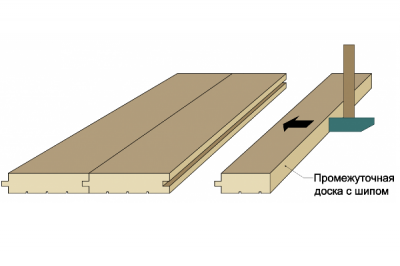
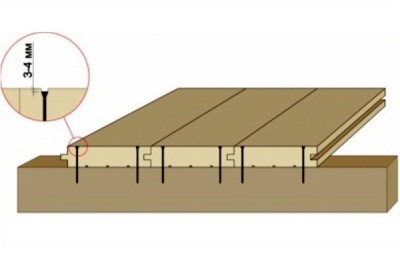
In custody
Labor-intensive measures for the installation of the wooden floor are often ordered at organizations offering the services of experienced stackers. However, you can apply the coating yourself.Patience, the fulfillment of technological requirements will help to beautifully and firmly lay a plank floor and save quite a tangible amount.

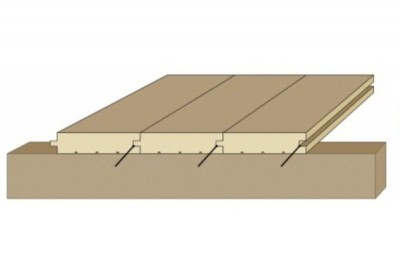
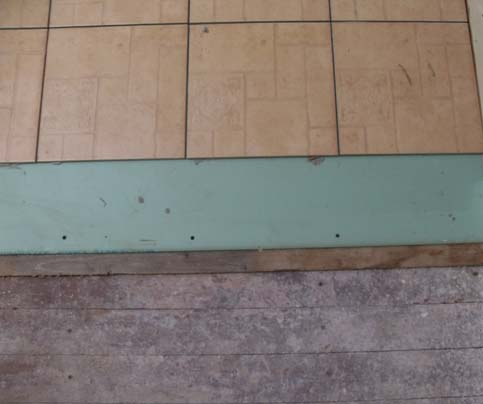

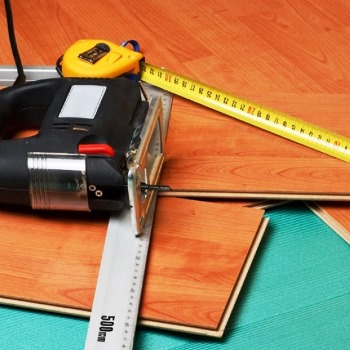
2 comments